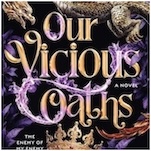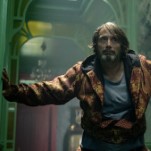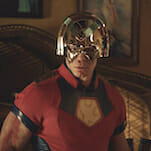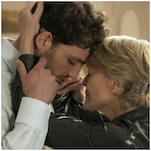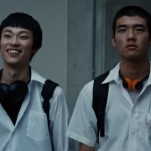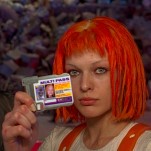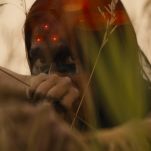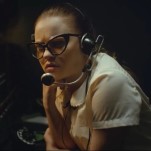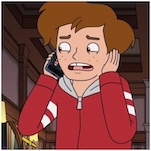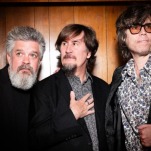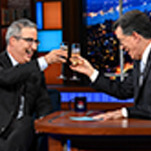All 13 Halloween Movies, Ranked
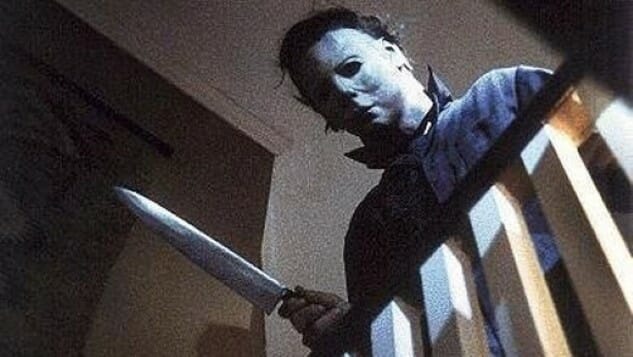
A while back, when we put out Paste’s official ranking of the 50 best slasher films of all time, we were faced with an impasse: What deserved most to occupy the #1 spot? Alfred Hitchcock’s Psycho, perhaps? It’s certainly one of the greatest films of the 1960s, and was incredibly instrumental in laying down some of the foundational techniques that would later be used in the slasher genre, but should it really lead a list of true “slashers”? A Nightmare on Elm Street, maybe? Of all the “big three” slasher franchises, it had the most inventive, most imaginative of original chapters, a film that is still endlessly entertaining to this day. But in the end, there was only one real possibility: We had to go with John Carpenter’s Halloween. And ranking the Halloween movies has become a horror rite of passage.
It was by no means the first “true” slasher (that honor might surprise you, but our research doesn’t lie), but it was a turning point in both the history of independent cinema and the horror genre: the first fully formed American slasher to strike the nation’s psyche like a bolt of lightning, inspiring countless imitators in the process. More than 40 years later, it’s one of the most imitated films of all time, and one that is still inspiring follow-ups, like director David Gordon Green’s trilogy of sequels (Halloween Ends most recently), the first since Rob Zombie’s dreadful Halloween II in 2009.
And so, this is clearly the time to look back on the Halloween movies by (controversially) putting these films in their correct order of quality, from worst to best.
Here are all the Halloween movies, ranked:
13. Halloween: Resurrection (2002)Director: Rick Rosenthal
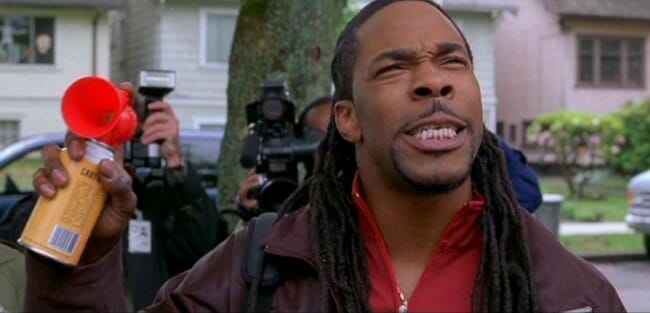
It’s no secret that plenty of horror sequels are written and shot just to make a quick buck, but Halloween: Resurrection can’t even justify its own existence on the most basic of levels. This film is the consummate Hollywood cynical sequel, thrown together without any passion for/understanding of the property, beyond the fact that the franchise might be able to produce another profitable entry (and this one was profitable, despite being absolutely terrible). It effectively retconned the somewhat satisfying ending of Halloween H20: 20 Years Later, adding in a short, dissatisfying death scene for Jamie Lee Curtis’s iconic Laurie Strode in its opening minutes, before wandering off into the most generic and unfocused territory this franchise has ever experienced. Myers returns to his childhood home and stalks contestants on an internet reality show. One has to imagine that the indignity of Laurie Strode’s demise in this film is part of what motivated Curtis to return to the role in David Gordon Green’s Halloween: It’s a chance for her to wipe the slate clean and give Laurie an ending she deserves. This film, on the other hand, is mostly memorable today just for the scene in which Busta Rhymes makes Shaolin kung fu poses and then side-kicks Michael Myers out of a window. Hell, even the dang mask looks distinctly wrong in this movie. Silly, ugly and not scary in the least, Halloween: Resurrection is an easy pick for the worst entry in the series.
12. Halloween II (2009)Director: Rob Zombie
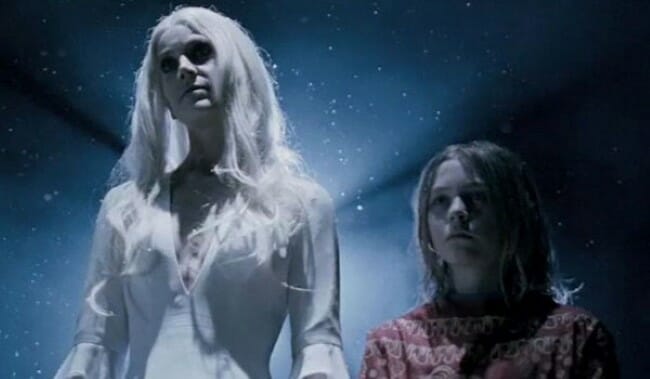
Rob Zombie’s pair of Halloween remakes don’t necessarily lack in imagination so much as they’re undone by an excessive desire to differentiate themselves. It’s true of the first film in 2007, but it’s even truer of Halloween II, in which Zombie can only be said to have gone off the deep end. His versions are obsessed with delving into the nature of Michael’s character, which is almost always a mistake in this series—Michael is so much more frightening (and compelling) when we don’t understand what the hell he is, or what drives him. This film’s constant use of Sheri Moon Zombie, who appears to both Michael and Laurie (Scout Taylor-Compton) as an angelic/demonic presence accompanied by a white horse, was simply too absurd an image for a series that has always been bound more by reality than the likes of Friday the 13th or A Nightmare on Elm Street. Perhaps Zombie would have been better off making an unrelated Halloween sequel than a remake of a beloved property, but he seems to hold little regard for the original source material, especially as his writing in Halloween II parallels the egocentricity he portrays in Dr. Loomis (Malcolm McDowell). Kudos to the guy for trying to take a chance, but the results are laughable.
11. Halloween (2007)Director: Rob Zombie

Oh, to think that David Gordon Green’s Halloween is the third film in this franchise that is just titled Halloween, while also being a sequel to the original movie. What a country, right?
Regardless, although it may not feel like it now, there was good reason to be cautiously optimistic back in 2007, before Rob Zombie’s first Halloween film was released. The director’s personal style, as seen in the likes of The Devil’s Rejects, seemed to promise a dirtier, grittier take on the Halloween mythos, and the casting was a genre movie’s dream: Malcolm McDowell as Dr. Loomis, joined by the ever-creepy Brad Dourif and a returning Danielle Harris, which was a nice nod to Halloween 4 and Halloween 5.
In execution, though, the film falls apart, emphasizing too much Michael’s abusive childhood as the source of his violence and killings. The menace of Michael Myers in the original Halloween is due to the impression that something unfathomable, alien and sinister has entered into this little boy and led him to do unspeakable things—not that he’s lashing out in an almost justifiable way against household abuse. The segments focused on Michael’s childhood muddy the waters of the film’s retelling of the Laurie Strode story, detracting from its supposed central character and instead focusing on a guy who comes off as a mentally ill drifter, more in need of antipsychotic drugs than a bullet.
10. Halloween: The Curse of Michael Myers, aka Halloween 6 (1995) Director: Joe Chappelle
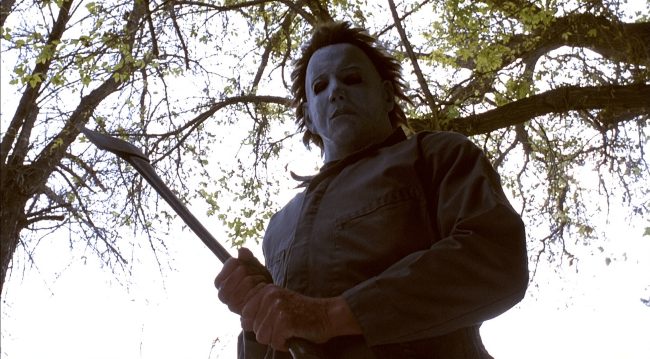
Ah, Halloween 6—without a doubt the strangest, most difficult-to-evaluate entry in the series. There’s no getting around the fact that this film is a conceptual and artistic mess, a jumble of half-baked ideas and bizarre set pieces and below average production. Still, it at least feels more like a Halloween film than the Rob Zombie entries, has some cool kills (the electrocution scene) and it makes an attempt to take the series in a new direction … it’s just not a direction that anyone wanted to see. Its best feature is the presence of a young Paul Rudd as an older Tommy Doyle, the little boy babysat by Laurie Strode in the original Halloween. That he would grow up obsessed with the events of that night, studying the lore of Michael Myers, is totally believable. But to make that lore revolve entirely around druidic magic and a cult of pagans in robes that look like they came from a ’70s sword-and-sorcery movie was the acme of foolishness.
There are Halloween fans who act as if the mythic “Producers Cut,” finally released commercially in 2014, fixes these problems, but in actuality it just substitutes new foolishness in for the old. You’re given the choice between a version that ends abruptly (the theatrical cut), or one that involves Michael being nothing more than a druid’s pawn, ultimately stopped by the placement of magical stones on the ground. Neither of these are good options, but that hasn’t stopped horror geeks from trying to lionize Halloween 6 as underrated in the same manner as Halloween 3. This one has some salvageable moments, but it doesn’t really deserve their efforts. Might I suggest these fans turn their “underrated” campaign in the direction of Halloween 4 instead?
9. Halloween Ends (2022)Director: David Gordon Green
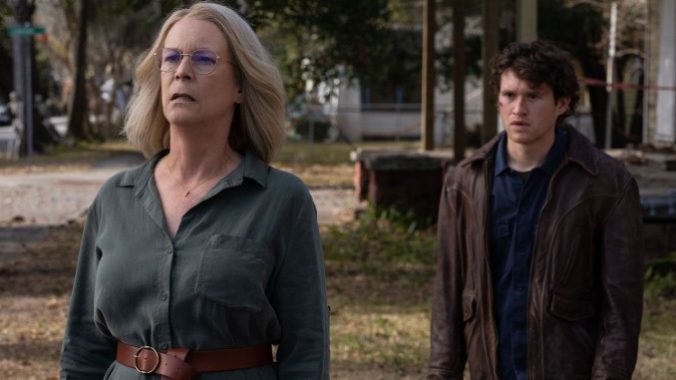
Director David Gordon Green’s Halloween sequel trilogy lurches across the finish line with this truly bizarre series capper, which makes the inexplicable decision of largely ditching the Strode women—the supposed protagonists of the series—in favor of a new character, Corey Cunningham, who finds himself increasingly corrupted by the evil legacy of Michael Myers. Heavily inspired by John Carpenter’s own Christine, it feels like an attempt to tell a very new kind of Halloween story, but to choose to tell that story in what was meant to be the triumphant capstone on Laurie Strode’s trilogy feels like a ludicrous decision. Much of the material here could perhaps have worked if Green had chosen to start his Halloween series with it, but the misleading marketing for Halloween Ends points to just how much the director’s vision seems to have clashed with that of the studio.
Beyond its plotting choices, though, Halloween Ends also tends to feel clumsy and slapdash, with alien dialog and deeply confusing character interactions. Michael Myers himself is likewise diminished severely in importance, and the entire film feels lacking in suspense and titillation. Aside from one or two stand-out kills, even the cinematic violence has little appeal. This seems destined to be a very divisive entry thanks to its ambitious desire to abandon series convention, but for the most part it just feels like Gordon badly miscalculated the job that was put in front of him.
8. Halloween H20: 20 Years Later (1998)Director: Steve Miner
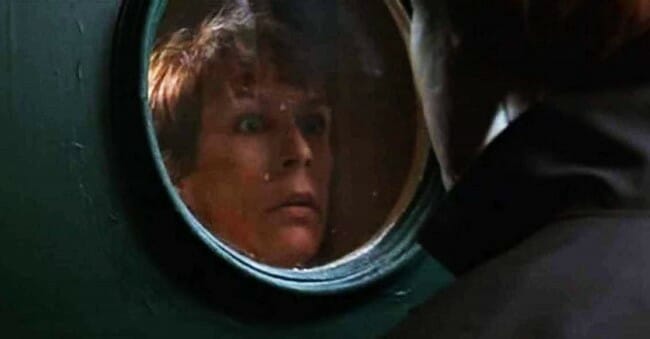
It’s sort of funny how despite the fact that Halloween 6 was dead-set in the middle of the decade, it’s H20 that feels so distinctly 1990s—just call it the “Josh Hartnett Effect,” I guess. But H20 in general is a bit of an odd beast; an attempt to bring the series back to its roots after it reached its peak of absurdity in Halloween 6, while also existing in the wake of the genre’s most famous meta-dissection, in the form of Scream. The latter fundamentally changed the landscape of making a classical “slasher movie,” but H20 doesn’t quite seem cognizant of this, despite the script being punched up by Scream screenwriter Kevin Williamson. As such, it felt a little bit dated even in 1998, although it does supply some suitably tense action—the shot of Laurie coming face-to-face with Michael after two decades is definitely a classic. With an ending that would be more fondly remembered if it wasn’t undone by the atrociousness of Resurrection, H20 attempted to bring the Michael and Laurie story full circle, and it does a decent job of it, despite not really having any of the most memorable “slashings” of the series. If anything, it feels just slightly undercooked in the “horror” department. With that said, you almost have to wish the Blumhouse Halloween was a direct sequel to H20, if only so it could be called Halloween H2020. —Jim Vorel
7. Halloween 5: The Revenge of Michael Myers (1989)Director: Dominique Othenin-Girard
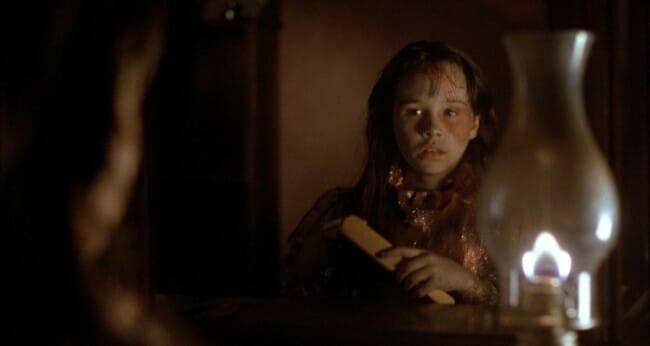
Alright, this placing will surely piss off some fanboys. Halloween 5 is not a well-loved film, and to be fair, it has no shortage of flaws and absurdities. The biggest and most glaring is the way that it invalidates the legitimately shocking end of Halloween 4, seemingly gun-shy about committing to the idea of Jamie Lloyd as a budding little girl serial killer with the evil Myers blood flowing through her veins. Instead, it makes the strange choice of rendering Jamie as a mute (although this doesn’t last for long) surrounded by annoying friends (Tina [Wendy Kaplan] is always mentioned, although she’s really not that grating). It also makes the bizarre implication that Michael Myers somehow slept in a farmer’s cabin for a year in between Halloween 4 and Halloween 5, which ranks pretty highly on the series’ list of wackadoo choices, while simultaneously introducing the much-derided “Man in Black” who symbolizes the druidic cult of Thorn we hate so much in Halloween 6.
However. Despite all of those things, Halloween 5 still has an irresistible, classical slasher vibe when it’s avoiding its more head-scratching moments. Michael has a great aura of menace about him as he dispatches teens, and Donald Pleasance in particular is at the top of his game with the “he’s pure evil!’ hyperbole. It’s refreshing that for once, the town’s police don’t assume that Dr. Loomis is a nutcase in this one—they actually remember the havoc that Myers wrought a year earlier. It all builds to one of the series’ better conclusions, as Loomis and Myers have a titanic showdown in the old Myers house, with Loomis whaling on a drugged Michael with a cobwebbed two-by-four until he collapses atop him, mortal enemies both spent after a grueling battle. It would have been a much more poetic end for Loomis than whatever the hell it is that happened in Halloween 6.
6. Halloween Kills (2021)Director: David Gordon Green
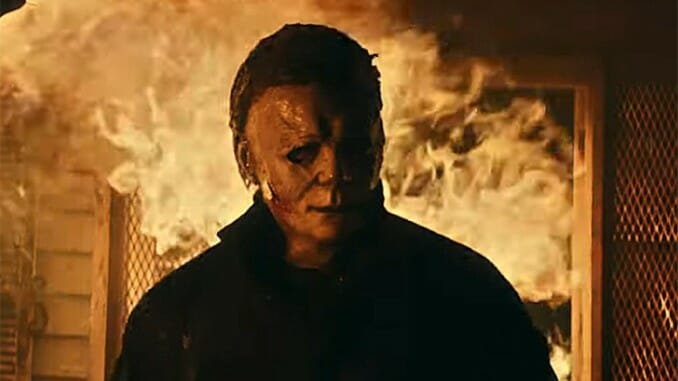
For whatever reason, the David Gordon Green Halloween trilogy to date has been adamant about the fact that it either doesn’t think the Strode women are worthy of truly being the central protagonists of this series, or it doesn’t trust them to shoulder that particular burden. It’s impossible to say why, but it’s a shame for capable performers like Jamie Lee Curtis, Judy Greer and Andi Matichak, all of whom are seriously sidelined to some degree in Green’s Halloween Kills. This entry has “middle chapter” written all over it, which only makes it more egregious that it tries to make a promise to the audience that “evil dies tonight,” as if it could possibly have the guts to actually kill off the franchise cash cow, Michael Myers in a middle chapter. Suffice to say, we’re mostly left treading water instead, although as with the previous installment, the violence is quite gnarly and the body count is insanely high.
Instead of truly continuing the story of Laurie Strode, Halloween Kills does make the interesting choice of turning its focus on the town of Haddonfield and the psychic scars that the entire community bears thanks to the horrors that Myers has visited on their home. It makes some interesting commentary on scapegoating and mob justice, although these aren’t new ideas—they were explored previously in Halloween 4 way back in 1988. Regardless, the focus on Haddonfield is the most interesting aspect of Halloween Kills, but it all comes to naught as pretty much all of these characters are dismissed as soon as they’ve arrived. We’re left with the promise that the next installment will get back to the central storyline, which makes Halloween Kills feel sadly like filler in the interim.
5. Halloween (2018)Director: David Gordon Green
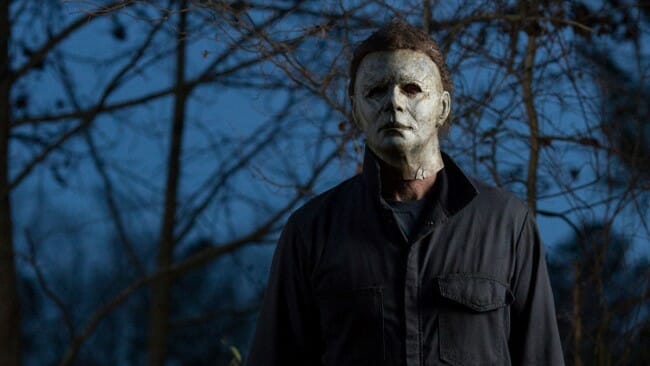
It’s not as if the #5 spot is a disgrace of a position to end up in, but we can’t help but be disappointed that 2018’s Halloween sequel couldn’t at least earn the title of “best sequel” with a returning Jamie Lee Curtis and the blessing of Carpenter himself. It’s not for a lack of Curtis trying, either: Her portrayal of a damaged, bitter, vindictive Laurie Strode is the best thing that Green’s Halloween has going for it. In fact, the dynamic between Laurie, her daughter Karen (Judy Greer) and her granddaughter Allyson (Andi Matichak) seems to form a perfect basis for a modern Halloween sequel—or it would, if only the film’s woeful script could keep its attention on them.
Instead, the new Halloween quickly spins out of control, pursuing wild goose chases with numerous ancillary characters who end up being completely inconsequential—some who literally leave the film two-thirds of the way through and never appear again. Absurd plot twists and laughable decision-making abound, working against the film’s strengths, which include its atmospheric visuals and admittedly brutal kills. It’s a frustrating balancing act; the film is engaging and thrilling in spurts, but infuriating every time its characters make yet another improbably stupid decision.
With that said, if all you want from a Halloween movie is to watch Michael Myers rack up a body count, Green’s Halloween will probably suit your purposes. But it wouldn’t have taken much to make it a whole lot better.
4. Halloween 3: Season of the Witch (1982)Director: Tommy Lee Wallace
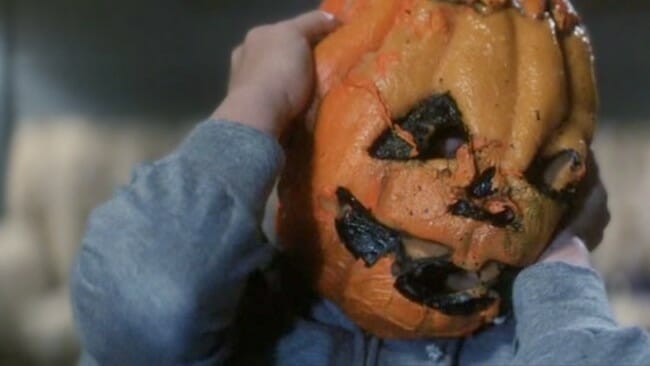
No entry in the Halloween series has seen more of a divisive reception, then and now, than Season of the Witch. Upon its release in 1982, the third entry in the series was initially derided by many for the decision to experiment with making Halloween into an anthology that would explore various aspects of the holiday, sans Michael Myers, who was intended to be dead after Halloween 2. This was a bitter pill for slasher fans to swallow, and their displeasure was easy to understand, but the modern assessment of Halloween 3 has transformed the film’s reputation, labeling it as a misunderstood masterpiece of transgressive terror.
As usual, the truth is somewhere in the middle. Halloween 3 is an odd, misanthropic and at times ugly film, but nevertheless one that contains some truly frightening and disturbing imagery. Its plot revolves around an evil corporation’s plans to massacre families via both witchcraft and science on Halloween night, and its cold-hearted tone and visuals conjure up comparisons to dystopian sci-fi dramas such as Soylent Green and Logan’s Run. It’s more cerebral than the Michael Myers-fronted entries in the series, with much to say in critique of consumer culture, but what really stands out is just how grim the whole thing is—especially the fates befallen by the characters who perish, including the taboo of violence toward children. It’s a truly unique horror film in general, and one that no doubt would have been better received if the name wasn’t Halloween 3, but being “fun” isn’t anywhere near the top of its priority list.
3. Halloween II (1981)Director: Rick Rosenthal
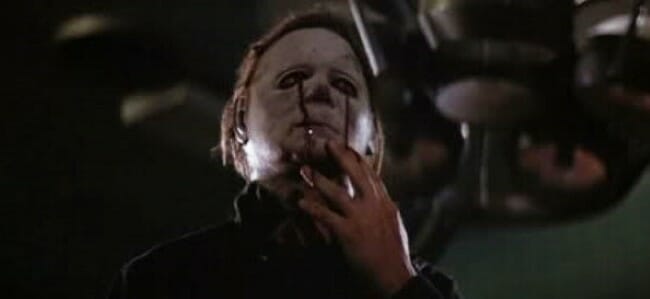
Halloween II is a film with a lot of things working in its favor, and a few things consistently working against it. It can’t claim the direction of John Carpenter, although he was there in some capacity behind the scenes, and he did write the script (he’s been less than kind to his own effort here in modern interviews). Likewise, it has the strength of a returning Jamie Lee Curtis as Laurie Strode (in a sadly goofy wig), and the built-in continuity bonus of following on the same fateful evening as the original Halloween. The presence of the great Curtis as the consummate Final Girl counts for a whole lot, but she’s let down a bit by the lack of solid supporting characters to play off of. You wouldn’t think that you’d be missing the presence of P.J. Soles in this movie, but somehow you do.
The hospital setting, likewise, has its ups and downs. At times, the weirdly deserted building features some of the series’ most memorable and tense cinematography and ambiance, but other times it can come to feel downright entropic, sucking all the energy out of the room. The kills at least are memorable; in the wake of Friday the 13th, the series had gained a bloodier and more overtly gory edge, as in the hot tub scalding scene, or the instantly iconic shot of blood dripping from the eyes of Michael’s mask. The conclusion, likewise, is a classic showdown between Loomis and Myers, and would have served as a perfectly fitting end to both characters, had Halloween proven successful as an anthology. In general, Halloween 2 hasn’t aged quite as well as the original, but the two still make for an obvious Halloween night double feature.
2. Halloween 4: The Return of Michael Myers (1988)Director: Dwight H. Little
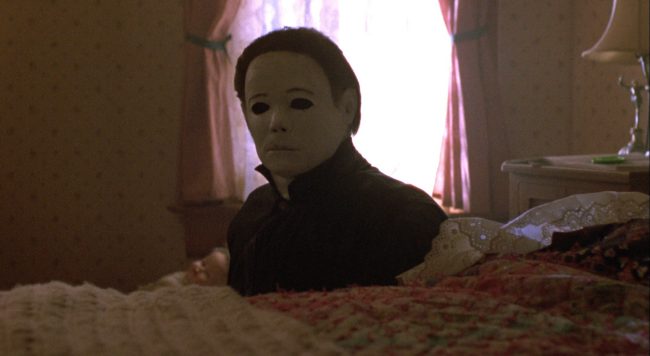
There will absolutely be some Halloween fans reading this list who chafe at the idea of calling Halloween 4 the second best entry in the series, but I submit to you: Of all these movies, it’s The Return of Michael Myers most deserves critical reevaluation, of the same sort that has benefited the legacy of Season of the Witch. Or, in other words: Don’t let the flaws of Halloween 5 drag down your perception of Halloween 4.
The Return of Michael Myers gives us a new heroine in the form of young Jamie Lloyd, who benefits from a very empathetic performance from a young Danielle Harris. The niece of Michael Myers, she’s subjected to constant harassment and frankly ridiculous bullying by the kids at school—it’s hard not to laugh when they circle her, chanting “Orphan, oprhan, Jamie’s an orphan!” But as soon as a revived Michael Myers enters the picture, Halloween 4 becomes a shot of pure slasher entertainment, notable for being more grounded in reality than most of the genre was by the time 1988 rolled around. Critics sometimes point to the quality of the mask in this film as a detractor, but it’s never bothered me—if anything, Michael looks more blankly emotionless than ever, which really works to frightening effect in a dream sequence when he emerges from under Jamie’s bed like the “boogeyman” of the original Halloween. The film also benefits from a second Final Girl in the form of Jamie’s adoptive sister Rachel (Ellie Cornell), who gives one of the most naturalistic and believable performances in slasher film history, even as she defends Jamie from Michael. And then there’s the devastating ending, in which we see the worst sum of Dr. Loomis’ fears realized.
1. Halloween (1978)Director: John Carpenter
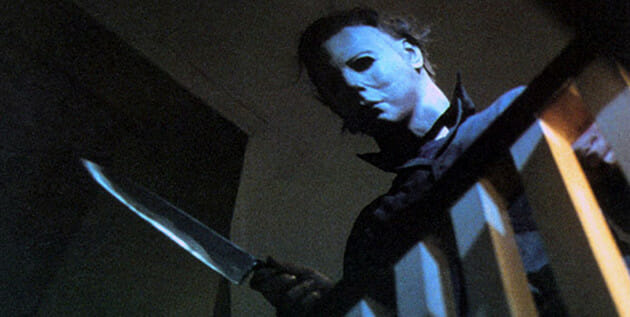
I mean really, what else could it be? Unlike series such as Friday the 13th or A Nightmare on Elm Street, where you can at least make solid arguments for other installments as superior to the original, the entire rest of the Halloween series exists in the massive shadow of John Carpenter’s first. From the moment we hear John Carpenter’s minimalist but instantly iconic opening theme music, Halloween chills the blood and establishes Michael Myers as a being of pure evil. No other film in the series is so simple and so effective all at once.
For students of John Carpenter’s filmography, it is interesting to note that Halloween is actually a significantly less ambitious film than his previous Assault on Precinct 13 on almost every measurable level. It doesn’t have the sizable cast of extras, or the extensive FX and stunt work. It’s not filled with action sequences. What it does give us is the first full distillation of the American slasher film, and a heaping helping of atmosphere. Carpenter built off earlier proto-slashers such as Bob Clark’s Black Christmas in penning the legend of Michael Myers, an unstoppable phantom who returns to his hometown on Halloween night to stalk high school girls. (The original title was actually The Babysitter Murders, if you haven’t heard that particular bit of trivia before.) Carpenter heavily employs tools that would become synonymous with slashers, such as the killer’s POV perspective, making Myers into something of a voyeur (he’s just called “The Shape” in the credits) who lurks silently in the darkness with inhuman patience before finally making his move. It’s a lean, mean movie with some absurd characterization in its first half (particularly from the ditzy P.J. Soles, who can’t stop saying “totally”) that then morphs into a claustrophobic crescendo of tension as Jamie Lee Curtis’ Laurie Strode first comes into contact with Myers. Utterly indispensable to the whole thing is the great Donald Pleasance as Dr. Loomis, the killer’s personal hype man/Ahab, whose sole purpose in the screenplay is to communicate to the audience with frothing hyperbole just what a monster this Michael Myers really is. It can’t be overstated how important Pleasance is to making this film into the cultural touchstone that would inspire the early ’80s slasher boom to follow.
Jim Vorel is a Paste Magazine staff writer and resident horror buff. You can follow him on Twitter for more film writing.
















